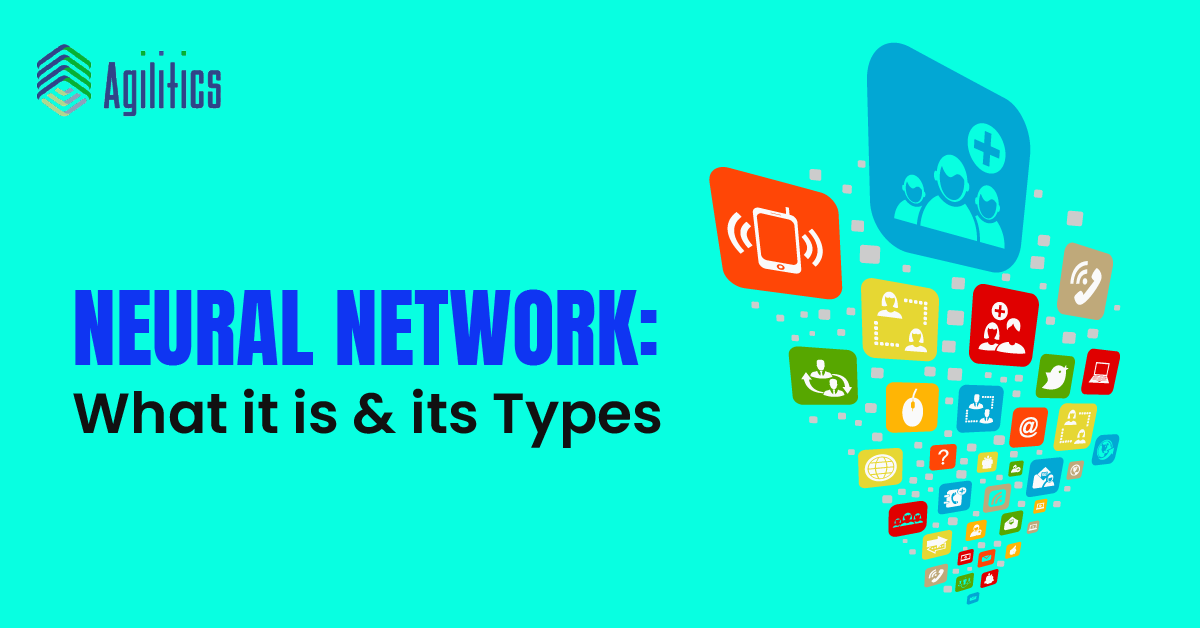From smartphones to self-driving cars, modernization has touched every part of our lives, and technology lies at the core of it.
The advancement of modern technology has reached new heights and has mimicked the functioning of neurons to create neural networks that attempt to function like a human brain.
Let’s understand what a neural network is, right off the bat.
What is a Neural Network?
Neural networks, also known as artificial neural networks (ANN) or simulated neural networks (SNN) are a computational learning system that is a subset of Machine Learning and is at the core of Deep Learning. Artificial neural networks are modeled on the human brain.
They use a set of functions to understand the input which can be in different forms of data such as text, images, sequential data, etc. Then the computation happens and they deliver the desired output which can be in a different form.
Artificial neural networks (ANN) have an input layer, single or multiple hidden layers, and an output layer. The nodes or the artificial neurons present in these layers are connected and mimic the functioning of neurons of the human brain.
Types of Neural Networks
Now that you have an understanding of what a neural network is, let’s move on to different types of neural networks.
Feed Forward Neural Network
Feed forward neural networks, a single layer perceptron, is one of the oldest and simplest neural networks. Feed forward neural network comprises a hidden layer, output layer, and input layer, and the nodes are entirely connected.
Since the data passes through different input nodes until it reaches the output node, which is to say that it moves in the ‘forward’ direction only, and there is no backward propagation.
It is interesting to note that a feed forward neural network will never form a cycle due to front propagation, while other networks do form a cycle for example a recurrent neural network.
Due to its simple nature, feed forward neural networks are used in speech recognition, classification, pattern recognition, etc.
Convolutional Neural Networks
As we already know that a neural network mimics the working of a neuron in the human brain, the same logic can be used to understand convolutional neural networks or cornets. Convolutional neural networks or multilayer perceptron’s are used to process data such as images.
A convolutional neural network typically has three layers:
- Convolutional Layer
- Pooling Layer
- Fully connected Layer
The convolutional operation on the input, which essentially reduces the parameters or high dimensionality of the image without losing any information makes it a popular choice for image classification. It is also known to produce highly accurate results in predicting images, better than most algorithms.
Recurrent Neural Networks
A recurrent neural network uses sequential or time series data, it is used to solve temporal problems including NLP (natural language process) and language translation among other problems.
The sequential data can be in any form either words or images, The first layer of the recurrent neural network is formed the same way as it is formed in a feed forward neural network, the recurrent neural network process begins in the subsequent layers.
The nodes in a recurrent neural network behave as a memory cell and retain information while making a decision the current input is considered and the previous input which was stored as memory is also considered.
Though the basic structure and functioning of a recurrent neural network are derived from a feed forward neural network, it surpasses in producing accurate predictions. Feed forward neural networks cannot handle sequential data, their predictions are based on current inputs only, without memorizing the previous inputs.
We use the recurrent neural network in our daily lives whenever we use Apple’s Siri or Google’s Voice Search.
Modular Neural Network
What happens when an organization faces a complex issue, does a single person take the onus of resolving it? No. When faced with complex issues we tend to break down the problem into different viable parts and different teams are given these parts to resolve the issue.
These teams work independently but all of them are working towards the same goal, that is resolving the issue.
The same analogy can be applied while understanding what a modular neural network is. A modular network comprises different networks working towards solving a specific portion of the issue.
These networks work independently without interacting with each other. The entire computational process is done at a much faster pace since the networks don’t interact with others which would have hampered the computational speed.
There are several advantages of using a modular neural network:
- Reduction in complexity of the task
- Can use multiple techniques together
- Ability to learn several tasks at the same time
Radial Basis Function Neural Network
Radial basis function neural network has a quite different neural network architecture. A radial basis function neural network has just three layers, while others have multiple layers, these three layers are:
- Input Layer
- Hidden Layer
- Output Layer
No computation happens in the input layer, the sole function of the input layer is to feed the data to the hidden layer, hence the number of neurons in the input layer should be equal to the dimensionality of the data.
The hidden layer is where the magic happens, and the computation happening at the hidden layer is based on the cover theorem,
Sequence to Sequence Model
Sequence to sequence model or seq2seq is quite renowned for its application in tasks such as text summarization, chat box, Machine Translation, and even Question Answering.
Sequence to sequence model architecture is similar to that of a recurrent neural network but not limited to it. As the name suggests this model can resolve sequential-based problems and masters in resolving problems where the output has different size & category than that of the input.
The sequence to sequence model has an encoder as well as a decoder, the job of the encoder is to understand the context of the input data which is fed in the form of a sequence, and then it sends it to the decoder for processing & then producing the output sequence.
Application of Neural Networks
Artificial neural networks and their application in our daily lives are more common than we think. Let us give you a few examples:
Healthcare
In the healthcare industry alone, the application of artificial neural networks is booming, and will continuously grow due to the benefits it brings to the table. Artificial neural networks can identify and diagnose cancerous cells like a real-life physician.
Artificial neural networks also perform image classification in the medical domain such as x-rays, MRIs, identifying tumors, etc.
Social Media
How do we get recommendations to add new people to our social media? That as well happens through ANN. Those recommendations are spot on, you either know those people or want to connect with them.
All hail the power of neural networks.
Marketing & Sales
How does Amazon, Flipkart, or even Instagram know that you like a specific skincare brand? They analyze & remember your activity and then make predictions based on that to target you with specific ads.
Boom! The Vitamin C serum that you were just looking up a while back is now on your screen again as a recommendation or in the form of an ad.
Other Applications of Neural Networks
A few other common applications of artificial neural networks are:
- Stock Market Prediction
- Character Recognition
- Spell Checks
- Machine Translation
- Speech Recognition
- Paraphrase Detection
- Text Classification
Pros & Cons of Neural Networks
There are two sides to a coin, the same holds true for a neural network as well. While Deep Learning is getting popular with every passing second, it isn’t a fault proof technology as of yet.
We have garnered the most common advantages & disadvantages of incorporating a neural network in achieving your business goals.
Pros of Neural Networks
Here is a list of some common pros of a neural network:
- Can perform tasks that a linear program cannot
- Information is stored on the network so any loss of data from one point doesn’t affect the entire network
- They can work with insufficient knowledge
- Ability to do parallel processing
- They don’t have to be reprogrammed
- Feature Engineering
- Saves cost & time
- Produces accurate & quality results
Cons of Neural Networks
While neural networks might look all bright & shiny, they do have a few dark spots as well, to name a few:
- They need to be trained
- Big neural networks require greater time for processing
- The setup requires hardware & needs maintenance
- The accuracy of data depends on the data fed
It is quite clear that the advantages outweigh the disadvantages of artificial neural networks. Most companies are incorporating Artificial Intelligence into their functioning to enhance business performance.
That means more job vacancies and a future in the booming industry of Machine Learning. If you are looking for ways to enter the industry then getting a certification can give a good kick-start.
We strive to provide business professionals with the skills and knowledge necessary to increase work performance and drive greater return on investment for the global customers we support. Agilitics delivers customized technology and management training solutions to large corporations and government agencies around the world.


